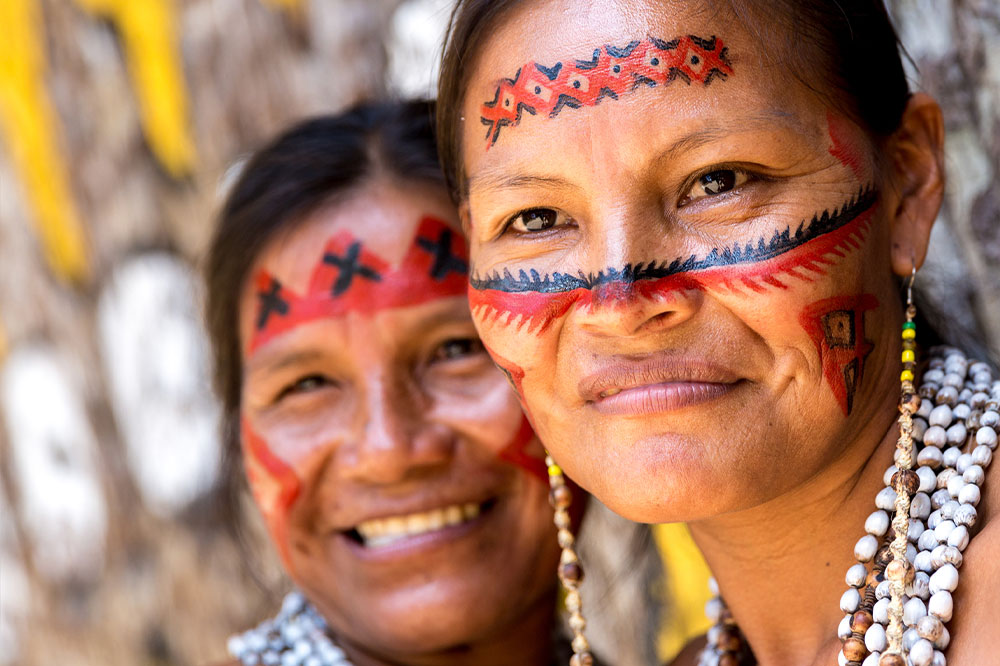Different kinds of indigenous people worldwide
People who maintain the traditions and language of an early culture that is associated with the first inhabitants of a given region are referred to as indigenous. According to sources, 6% of the global population is represented by indigenous people living in various geographic regions. Over the years, their rights have been recognized through various international laws and instruments. Here are some of the different kinds of indigenous people around the world.
Native Americans
In the country, indigenous people were the inhabitants before the arrival of the European settlers in the 15th century, and they are referred to as Native groups.

Maori
The Maori are the indigenous people of mainland New Zealand. They are settlers from East Polynesia who arrived in New Zealand between 1320 and 1350. More than 15 percent of the population consists of Maori.
Kurds
In the Middle East, Kurds are one of the indigenous peoples inhabiting a mountainous region around the borders of Turkey, Iraq, Syria, Iran, and Armenia. Kurds adhere to different religions, though the majority are Sunni Muslims.
Maasai
Massai are indigenous people in Africa settled in Kenya and Northern Tanzania. Of over 50 tribes of native people in Kenya, the Maasai tribe is one of the few tribes that have retained its traditions and lifestyle. They speak Maa, which is derived from Nilo-Saharan, and is also the official language of Tanzania and Kenya.
Scheduled tribes
In India, indigenous people are referred to as Scheduled Tribes. In Mainland India, these scheduled tribes are called Adivasis. Some of the major tribes in India include the Gond Tribes in Central India, Santhal tribes of West Bengal, Khasi Tribes and Garo Tribes of Meghalaya, and Angami Tribes of Nagaland.
Sami
One of the world’s indigenous people is the Sami of Northern Europe. They are also Sweden’s official national minorities. Sami are the descendants of those who had inhabited northern Scandinavia for thousands of years. The people of Sami speak about five languages, which include Northern Sami, Lule Sami, Southern Sami, Pite Sami, and East Sami.
Maya
For centuries, the Maya tribe has thrived in Mexico and Central America. They have continuously inhabited the lands from the south of Mexico down to Guatemala. In Guatemala, 21 different Mayan communities make up 51 percent of the national population. There are 26 indigenous Mayan languages that people speak.
The Huli People
Indigenous people who live in the Southern Highland of Papua New Guinea are referred to as the Huli. These indigenous people have lived in the area for over 1000 years. They are also called Huli Wigmen for the fascinating wig tradition that they follow.
First Nations
Australian First Nations or Indigenous Australians lived in Australia before British colonization. They are divided into two distinct groups: the Aboriginal peoples and the Torres Strait Islander peoples. These traditional owners of the land are the oldest civilization on earth and were also the first humans to migrate out of Africa to reach the shores of Australia.
Kazakhs
Kazakhs are indigenous peoples of central Asia inhabiting mainly Kazakhstan. They are the descendants of the ancient Turkic tribes called Kipchaks and the medieval Mongolic tribes called Dughlats, Jalairs, and Keraits.
The Nenets
The Nenets of Northern Artic Russia, living in sub-zero conditions, are known for their traditional methods of reindeer herding. These indigenous peoples have led nomadic lifestyles for thousands of years. As the seasons change, and the region is covered in snow, the Nenets migrate to the south of the Arctic circle following ancient migration routes.
The Himba
The Himba, also called Ovahimba, live in northern Namibia in the Kunene region. This is Africa’s tribal group that has inhabited the region since the early 16th century and is the last nomadic people in the region.
Ainu
They are the indigenous people of Japan and are native to Hokkaido, Sakhalin, and the Kurils. Ainus were the earliest settlers of Hokkaido and were marginalized by Japanese rule for centuries. Like many other indigenous people, their occupation was hunting, foraging, and fishing. But after Meiji Restoration, they were forced into agriculture.
Inuit
Inuit are indigenous people who inhabit the northern regions of Canada. They have eight Inuit ethnic groups and speak five languages. The Inuit are the descendants of the Thule people who came from Western Alaska around 1000 CE and are called Inuit. They are Aboriginal peoples in Canada recognized in the Constitution Act, 1982.
Apart from holding ancestral knowledge and maintaining traditions and cultures, indigenous people are known to safeguard 80 percent of the world’s remaining biodiversity.

